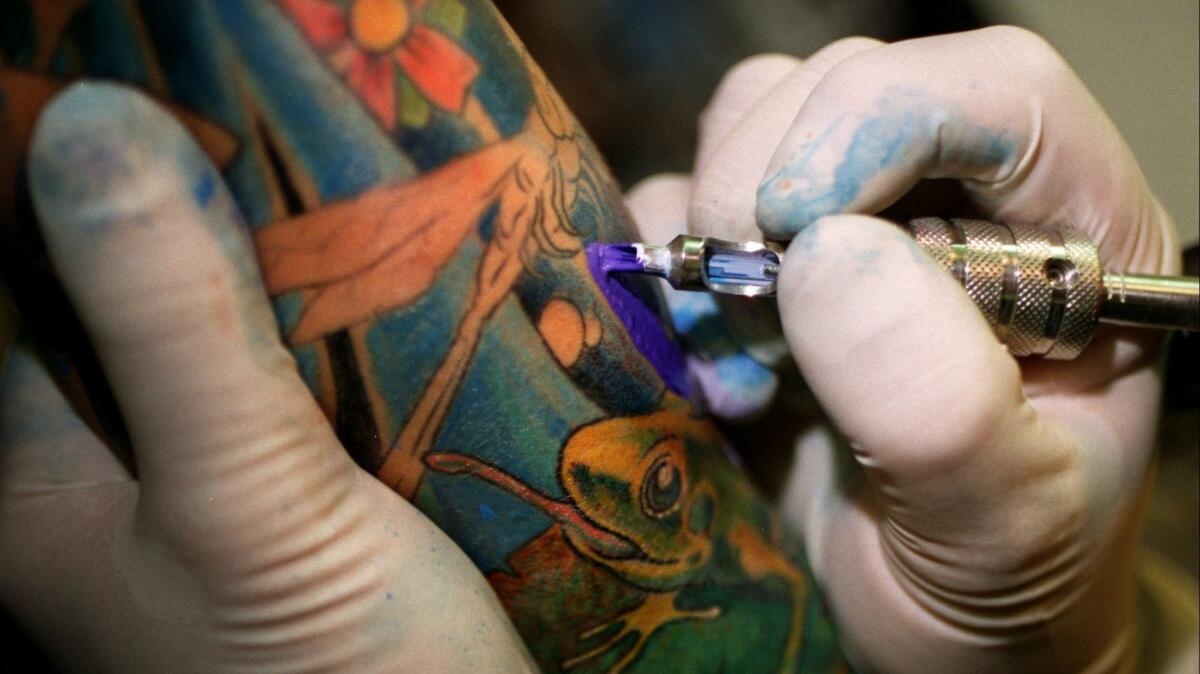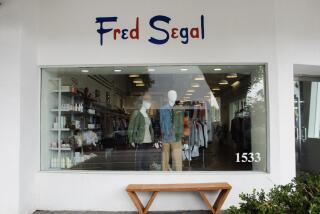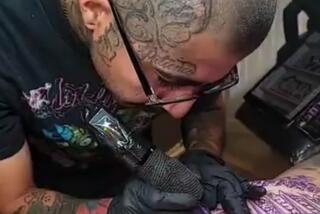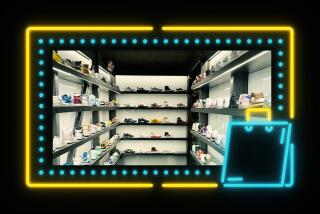From the Archives: How tattoos have grown as an art form

- Share via
Some call it a craft. Others see it as art.
But to the owners, employees and customers of Bert Grimm’s “World Famous” emporium in Long Beach, the ancient practice of tattooing is a fascination, a medium of expression, a lifelong commitment--and something that is only beginning to come into its own.
“People are more open-minded these days,” said Bill Todd, who has been the two-room shop’s co-owner since the late 1970s. “Back in the 1950s, most of the clients here at the beach were from the military--sailors and Marines--but all that has changed.”
And so have the little tattoo parlor’s surroundings: A sign over the doorway at 22 Chestnut Place, tag end of a once-flourishing beach amusement zone called the Pike, says the shop was established in 1927.
Lyle Tuttle, proprietor of the Tattoo Art Museum in San Francisco, said he believes this would make it the oldest such emporium in the United States.
“There were eight tattoo shops on the Long Beach Pike in the mid-’50s, all of them set up after Grimm’s place,” Tuttle said. “And I ought to know. I worked for Bert Grimm back then and several of my own tattoos are his personal work, which makes me a kind of museum piece, myself.”
One by one, however, all the other shops closed or moved and the Pike itself folded when area redevelopment mandated closure of the roller coaster, merry-go-round and other amusement park operations.
Grimm himself--a recognized master in the field who had worked with Buffalo Bill Cody in the dying days of the Wild West Show and tattooed the likes of gangsters Pretty Boy Floyd, Bonnie Parker and Clyde Barrow--drifted away to Oregon, where he died earlier this year.
“But the shop stayed, and is doing just fine, thank you,” Todd said. “Today our clientele may include a few members of the military, but we also get office workers, bikers, store clerks, actors, rock stars, writers, doctors, lawyers--you name it. People in general have finally discovered that tattooing can be beautiful and tasteful as well as macho . . . that it can be true art.”
Rick Walters, one of the four operators who work at the shop, said the tools of the trade have changed a bit too. The patterns available are more numerous (Walters takes special pride in the variety available at Grimm’s) and artistic; the inks used are more sophisticated (more subtle and less apt to fade).
RELATED: A Tattoo landmark fades along with Long Beach’s naval operations »
“The healing process has been speeded up,” Walters said. “But the device that applies them (an item known simply as The Machine that bobs up and down 1,000 times a minute, embedding ink under the skin) hasn’t really changed since the turn of the century.”
Grimm’s shop may be alone now on its street, but there are three others in Long Beach and dozens more in the Los Angeles metropolitan region, and Tuttle said he sees no end in sight.
“Tattooing was common in ancient Egypt,” he said, “and it has never seemed to lose its appeal. The clientele may change and the tools may get better, but the art is the art. Nothing changes that.”
More to Read
Sign up for Essential California
The most important California stories and recommendations in your inbox every morning.
You may occasionally receive promotional content from the Los Angeles Times.










